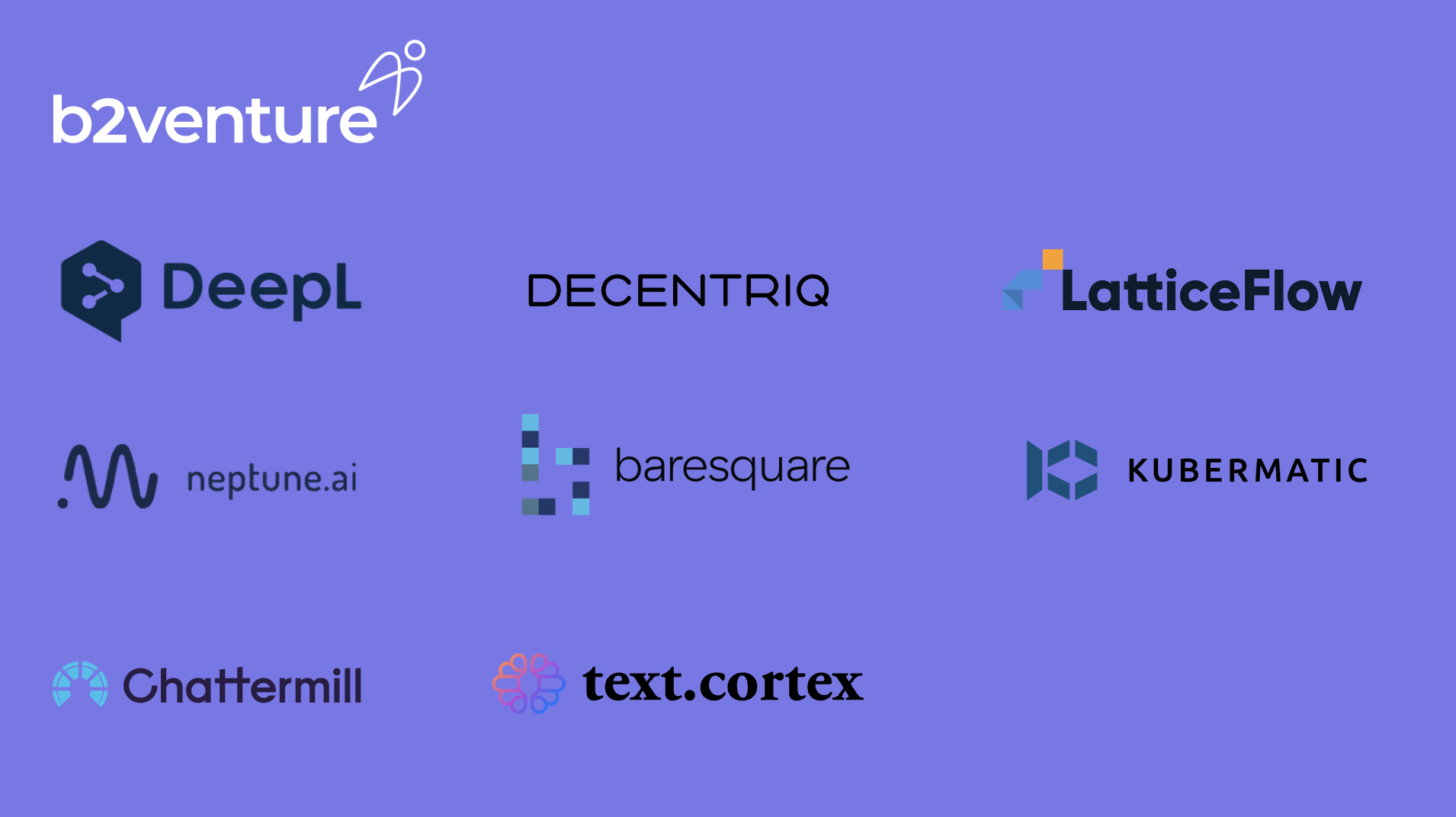How the get startup fundraising right - the fundamentals
How the get startup fundraising right - the fundamentals

The funding landscape for startups has experienced a profound downturn in 2023, which makes it even more important for founders to understand how to best approach fundraising. As our portfolio company, Ledgy, mentions in its latest report, this year has been “a tougher time to raise money”. The pace at which startup founders are raising money across key markets in the United States and Europe has slowed, and overall deal volume is down 44% YoY in Europe from the previous year.
When we first published our thoughts on fundraising last year, the environment was different, but the fundamental lessons remain the same: effectively managing the fundraising process is one of the most critical steps in creating a successful company, and way too many founders approach fundraising with a transactional mindset, focusing primarily on a high valuation and speed.

But there is a lot more to consider, especially now - that's why we have updated this article and are providing links to some important tools for first-time founders to manage the fundraising process.
Think of Investors as Long-Term Partners
One thing first-time founders often neglect: your new investors will likely have board seats and will influence your company's future in a major way. They will likely stick around for many years. Are they the partner you will truly need over the long term?
We’ve come up with some best-practice approaches to fundraising and the mindset you’ll need:
- Understand that you are not just raising money, you are "hiring" a long-term business partner - Depending on the context, your investors can help you in many ways with introductions, resources, industry expertise, and strategic advice. Think early about what you want from an investor.
- Build relationships with relevant investors early - Even if you're not fundraising or if they passed in previous rounds, update them every quarter or so (email is fine, a quick call is better) about your progress. They will get to know you, and you will understand their thinking better.
- Think about the outcome you want to achieve for your company - Are you going to be happy with a medium-sized exit after a few years? Or are you aiming for an IPO? Many scenarios along this spectrum are totally legitimate and common, as long as it works for the founding team, but this will guide which kind of investor is best for you.
Define Your Ideal Investor Profile
Similarly to an Ideal Customer Profile, it's important to think about what your "ideal" investor looks like.
Here are some dimensions to explore:
- Level of industry expertise - this will determine the kind of strategic advice that you can get.
- Geographical footprint - Home market vs. pan-European or even global? If you have plans to scale internationally soon, this could be very relevant.
- Size of firm and resources for support - Larger VC firms tend to have more resources and often can help with operational tasks such as recruiting. Smaller firms, on the other hand, are sometimes more specialized and work very closely with their portfolio companies in specific ways in specific industry verticals or sectors.
- Size of fund and follow-on funds - Larger funds have more money to deploy and can often finance your startup throughout over several rounds. However, their business model works only for very large outcomes, so they might put more pressure on their startups to grow very quickly, which changes your risk profile. Smaller, more specialized funds often work with larger firms to arrange follow-on rounds, so that can work as well.
- Size and depth of network - Most VC firms are well connected, but the size and particularly depth of their network differs. Some firms (such as b2venture) work closely with a community of angel investors that have a background in many different industries. This provides a more readily available and trustworthy network than just having a lot of business acquaintances.
- Stage fit - There is a trend toward VC firms investing in pretty much any round and at any ticket size, but in reality most firms are still specialized on certain stages and develop different capabilities and business models depending on this. A pre-seed specialist is very different from a Series A firm and a Series C+ growth fund. Make sure you understand what the sweet spot of a particular investor is and how important this is to you. For example, if you raise a seed round and approach many investors that specialize in later stages, you will hear a lot of "too early for us" declines and waste a lot of your time.
All of these dimensions have trade-offs. Despite what some VCs might say, you won’t find an investor that is perfect across every dimension, and of course, you might need to choose an investor who is less than ideal. Therefore, understand your preferences clearly and rank the dimensions above in a clear way, excluding whatever is not important.
Define Your Parameters
You will also need to understand what your desired parameters are - in terms of round size, valuation expectations, round constellation and other terms:
- Round Size: Take a typical round size for your stage in your industry and geography as the starting point. Make sure you look at recently closed funding rounds since the market has changed significantly since 2021, and old rules do not apply anymore. Also note that there are huge differences between similar companies depending on location and industry, so make sure you are comparing yourself and your company with the relevant set. Decide in your business plan what you would do with this amount of capital and how much runway it would give you.
- Round size upper/lower bounds: It is not unusual for investors to push you to raise more money once they're interested. It's also possible that investors will tell you that you're not quite ready for your intended number and offer a smaller check. Think in advance about what that would mean for the development of your business and set minimum and maximum numbers that you would be willing to discuss.
- Valuation and dilution: By now, the market standard is that you are going to dilute 20% in an early (pre Series C) funding round. This value of course hinges on the valuation that you are able to get. Depending on how the company is doing, how competitive the round is, and how much leverage the investor has, this value might go up and down a bit, but don't expect fundamental deviations from this anchor point. It has turned out to be a successful pattern over many years, so few investors are willing to discuss very different terms. It is a frequent mistake of less experienced founder teams to optimize purely for valuation. Dilution does hurt, but a particularly high valuation does not just bring advantages. Your company will have to grow into this valuation to raise the next round of funding. As a rule of thumb, a startup should grow to about 3x the valuation of the previous round to raise another round, so imagine what this means for your operations. Also, the best investors will not necessarily be forced to pay the highest valuation, so this is another trade-off to be aware of.
- Round constellation: Before starting to fundraise, you should ask existing investors if they are willing to join the round and, if so, at what size. It's fairly customary for investors to at least execute their pro-rata rights, and some might even have more appetite. Others might prefer to get out and be open to a secondary transaction where another investor buys their shares. In any case, it is useful to understand your existing investors’ preferences.
- Syndicates: Another consideration is whether you want to work with a single VC firm or you are open to a syndicate of 2 or more firms. Generally speaking, syndicates can be powerful because you get more smart people and their networks at the table, but it can also complicate things.
- Strategic angel investors: Sometimes additional angel investors with a strategic impact might want to join the round with small tickets. Decide if you would be open for that and what the benefits might be.
- Other terms: Most term sheets nowadays are fairly standardized regarding key terms such as liquidation preferences, control rights, and founder vesting. You should understand what these standard terms are and decide if there are any terms that would be a no-go for your team. Due to the market downturn, some investors have started insisting on more investor-friendly terms, so make sure you understand what these terms mean and how they might affect you. Terms are always subject to negotiation once an investor is ready to issue a term sheet, but it's important to understand your own desired outcome.
In most cases, a lead investor will have their own plans for what the round will look like, so be aware that this is going to be a point of negotiation.
Preparing Your Materials
Every interaction with a potential investor is part of the audition, so come well prepared - it sends a positive signal that you are on top of things and can actually execute the vision you are laying out before the investor.
For a typical raise you will need at least:
- Pitch deck: There are plenty of resources on how to build an ideal deck. Ideally you should have a short version (10-15 pages) for initial pitches and send-outs and a longer version (up to 40 pages) with supporting materials for in-depth discussions.
- Financial model: VCs will want to see a financial model in order to understand how you structure your business and what your financial assumptions are, including such crucial things as unit costs and CAC/LTV ratios. A financial model should at least cover the current and next two years, sometimes it can go out up to five years. Don’t reinvent the wheel when making the model. Just use one of the readily available best practice templates that will guide you through the important aspects. It is important to understand that investors don't expect you to predict the future. Of course, the real numbers will look different. But investors need this perspective to understand your thinking from a quantitative point of view, and building a strong model is an important exercise for your team as well.
- Cap table: VCs want to understand the current ownership, so be prepared with a clean and correct cap table. Using a tool such as Ledgy makes this easier.
- Pipeline excerpt or funnel metrics: If you're a B2B business, investors will want to understand who is currently in your sales funnel. In B2C, they will want to understand what your funnel metrics (conversion rates etc.) look like.
Virtual Data Room
You should be prepared before your first investor calls with a virtual data room that contains these documents. Traditionally, a well-structured shared folder on GDrive or Dropbox works well, but you can go the extra mile and provide a more easily navigable page on a tool such as Notion. VCs have to look at a lot of startup materials, so the easier you make it for them, the better.
📋 See Our Data Room Template
Seek Legal Advice
This is also a good time to find a lawyer you can work with during the process if you don't have one already. Very often the process moves quickly once an investor gets excited about your company, and you don't want to slow it down trying to find a good lawyer.
Managing Your Investor Process
A helpful way to think about this process is to use a funnel just as you would for any marketing and sales process.
For a follow-on fundraise, the funnel stages should look something like this:
- Prospect, no interaction yet (these would be firms you would like to talk to but haven't)
- Initial informal calls (these are investors you had an initial discussion with, maybe based on their own outreach, but not pitched formally)
- Formal reach out (investors you reached out to with a clear "we're fundraising" message)
- First call (initial pitch, typically to 1-2 people at the VC firm)
- Second call (often with additional people from the VC firm and from your side)
- Initial due diligence (the VC firm will conduct reference calls, etc.)
- Partner/Management Meeting (you present to the entire partnership, which is typically the final decision point)
- Term Sheet
- Full due diligence (the VC firm analyzes your business and negotiates contracts)
- Close
- Declined (the VC firm was not interested)
- Not interested (you were not interested in working with the VC firm)
The best way to manage this funnel is to either use your existing CRM system or have a separate lightweight system, such as a Kanban board in a tool like Notion or Trello. This is also important as it gives transparency to your core team – and ideally also to your board – so that everybody is on the same page at all times.

_____________________________________________________________________
You can find a more detailed version of this guide that dives deeper into pitching and running the fundraising process here.
That and more startup topics are available on our Startup Resources page. b2venture offers a wide variety of resources similar to this, plus curated tools, best practices, and relevant articles that should be useful for startup management teams across all the topics they typically face in building a company.
Andreas Goeldi is Partner at b2venture and has been part of the b2venture Fund Team since 2019. He is an avid technologist, serial entrepreneur, and investor with over 25 years’ experience. You can reach him via email here.

The funding landscape for startups has experienced a profound downturn in 2023, which makes it even more important for founders to understand how to best approach fundraising. As our portfolio company, Ledgy, mentions in its latest report, this year has been “a tougher time to raise money”. The pace at which startup founders are raising money across key markets in the United States and Europe has slowed, and overall deal volume is down 44% YoY in Europe from the previous year.
When we first published our thoughts on fundraising last year, the environment was different, but the fundamental lessons remain the same: effectively managing the fundraising process is one of the most critical steps in creating a successful company, and way too many founders approach fundraising with a transactional mindset, focusing primarily on a high valuation and speed.

But there is a lot more to consider, especially now - that's why we have updated this article and are providing links to some important tools for first-time founders to manage the fundraising process.
Think of Investors as Long-Term Partners
One thing first-time founders often neglect: your new investors will likely have board seats and will influence your company's future in a major way. They will likely stick around for many years. Are they the partner you will truly need over the long term?
We’ve come up with some best-practice approaches to fundraising and the mindset you’ll need:
- Understand that you are not just raising money, you are "hiring" a long-term business partner - Depending on the context, your investors can help you in many ways with introductions, resources, industry expertise, and strategic advice. Think early about what you want from an investor.
- Build relationships with relevant investors early - Even if you're not fundraising or if they passed in previous rounds, update them every quarter or so (email is fine, a quick call is better) about your progress. They will get to know you, and you will understand their thinking better.
- Think about the outcome you want to achieve for your company - Are you going to be happy with a medium-sized exit after a few years? Or are you aiming for an IPO? Many scenarios along this spectrum are totally legitimate and common, as long as it works for the founding team, but this will guide which kind of investor is best for you.
Define Your Ideal Investor Profile
Similarly to an Ideal Customer Profile, it's important to think about what your "ideal" investor looks like.
Here are some dimensions to explore:
- Level of industry expertise - this will determine the kind of strategic advice that you can get.
- Geographical footprint - Home market vs. pan-European or even global? If you have plans to scale internationally soon, this could be very relevant.
- Size of firm and resources for support - Larger VC firms tend to have more resources and often can help with operational tasks such as recruiting. Smaller firms, on the other hand, are sometimes more specialized and work very closely with their portfolio companies in specific ways in specific industry verticals or sectors.
- Size of fund and follow-on funds - Larger funds have more money to deploy and can often finance your startup throughout over several rounds. However, their business model works only for very large outcomes, so they might put more pressure on their startups to grow very quickly, which changes your risk profile. Smaller, more specialized funds often work with larger firms to arrange follow-on rounds, so that can work as well.
- Size and depth of network - Most VC firms are well connected, but the size and particularly depth of their network differs. Some firms (such as b2venture) work closely with a community of angel investors that have a background in many different industries. This provides a more readily available and trustworthy network than just having a lot of business acquaintances.
- Stage fit - There is a trend toward VC firms investing in pretty much any round and at any ticket size, but in reality most firms are still specialized on certain stages and develop different capabilities and business models depending on this. A pre-seed specialist is very different from a Series A firm and a Series C+ growth fund. Make sure you understand what the sweet spot of a particular investor is and how important this is to you. For example, if you raise a seed round and approach many investors that specialize in later stages, you will hear a lot of "too early for us" declines and waste a lot of your time.
All of these dimensions have trade-offs. Despite what some VCs might say, you won’t find an investor that is perfect across every dimension, and of course, you might need to choose an investor who is less than ideal. Therefore, understand your preferences clearly and rank the dimensions above in a clear way, excluding whatever is not important.
Define Your Parameters
You will also need to understand what your desired parameters are - in terms of round size, valuation expectations, round constellation and other terms:
- Round Size: Take a typical round size for your stage in your industry and geography as the starting point. Make sure you look at recently closed funding rounds since the market has changed significantly since 2021, and old rules do not apply anymore. Also note that there are huge differences between similar companies depending on location and industry, so make sure you are comparing yourself and your company with the relevant set. Decide in your business plan what you would do with this amount of capital and how much runway it would give you.
- Round size upper/lower bounds: It is not unusual for investors to push you to raise more money once they're interested. It's also possible that investors will tell you that you're not quite ready for your intended number and offer a smaller check. Think in advance about what that would mean for the development of your business and set minimum and maximum numbers that you would be willing to discuss.
- Valuation and dilution: By now, the market standard is that you are going to dilute 20% in an early (pre Series C) funding round. This value of course hinges on the valuation that you are able to get. Depending on how the company is doing, how competitive the round is, and how much leverage the investor has, this value might go up and down a bit, but don't expect fundamental deviations from this anchor point. It has turned out to be a successful pattern over many years, so few investors are willing to discuss very different terms. It is a frequent mistake of less experienced founder teams to optimize purely for valuation. Dilution does hurt, but a particularly high valuation does not just bring advantages. Your company will have to grow into this valuation to raise the next round of funding. As a rule of thumb, a startup should grow to about 3x the valuation of the previous round to raise another round, so imagine what this means for your operations. Also, the best investors will not necessarily be forced to pay the highest valuation, so this is another trade-off to be aware of.
- Round constellation: Before starting to fundraise, you should ask existing investors if they are willing to join the round and, if so, at what size. It's fairly customary for investors to at least execute their pro-rata rights, and some might even have more appetite. Others might prefer to get out and be open to a secondary transaction where another investor buys their shares. In any case, it is useful to understand your existing investors’ preferences.
- Syndicates: Another consideration is whether you want to work with a single VC firm or you are open to a syndicate of 2 or more firms. Generally speaking, syndicates can be powerful because you get more smart people and their networks at the table, but it can also complicate things.
- Strategic angel investors: Sometimes additional angel investors with a strategic impact might want to join the round with small tickets. Decide if you would be open for that and what the benefits might be.
- Other terms: Most term sheets nowadays are fairly standardized regarding key terms such as liquidation preferences, control rights, and founder vesting. You should understand what these standard terms are and decide if there are any terms that would be a no-go for your team. Due to the market downturn, some investors have started insisting on more investor-friendly terms, so make sure you understand what these terms mean and how they might affect you. Terms are always subject to negotiation once an investor is ready to issue a term sheet, but it's important to understand your own desired outcome.
In most cases, a lead investor will have their own plans for what the round will look like, so be aware that this is going to be a point of negotiation.
Preparing Your Materials
Every interaction with a potential investor is part of the audition, so come well prepared - it sends a positive signal that you are on top of things and can actually execute the vision you are laying out before the investor.
For a typical raise you will need at least:
- Pitch deck: There are plenty of resources on how to build an ideal deck. Ideally you should have a short version (10-15 pages) for initial pitches and send-outs and a longer version (up to 40 pages) with supporting materials for in-depth discussions.
- Financial model: VCs will want to see a financial model in order to understand how you structure your business and what your financial assumptions are, including such crucial things as unit costs and CAC/LTV ratios. A financial model should at least cover the current and next two years, sometimes it can go out up to five years. Don’t reinvent the wheel when making the model. Just use one of the readily available best practice templates that will guide you through the important aspects. It is important to understand that investors don't expect you to predict the future. Of course, the real numbers will look different. But investors need this perspective to understand your thinking from a quantitative point of view, and building a strong model is an important exercise for your team as well.
- Cap table: VCs want to understand the current ownership, so be prepared with a clean and correct cap table. Using a tool such as Ledgy makes this easier.
- Pipeline excerpt or funnel metrics: If you're a B2B business, investors will want to understand who is currently in your sales funnel. In B2C, they will want to understand what your funnel metrics (conversion rates etc.) look like.
Virtual Data Room
You should be prepared before your first investor calls with a virtual data room that contains these documents. Traditionally, a well-structured shared folder on GDrive or Dropbox works well, but you can go the extra mile and provide a more easily navigable page on a tool such as Notion. VCs have to look at a lot of startup materials, so the easier you make it for them, the better.
📋 See Our Data Room Template
Seek Legal Advice
This is also a good time to find a lawyer you can work with during the process if you don't have one already. Very often the process moves quickly once an investor gets excited about your company, and you don't want to slow it down trying to find a good lawyer.
Managing Your Investor Process
A helpful way to think about this process is to use a funnel just as you would for any marketing and sales process.
For a follow-on fundraise, the funnel stages should look something like this:
- Prospect, no interaction yet (these would be firms you would like to talk to but haven't)
- Initial informal calls (these are investors you had an initial discussion with, maybe based on their own outreach, but not pitched formally)
- Formal reach out (investors you reached out to with a clear "we're fundraising" message)
- First call (initial pitch, typically to 1-2 people at the VC firm)
- Second call (often with additional people from the VC firm and from your side)
- Initial due diligence (the VC firm will conduct reference calls, etc.)
- Partner/Management Meeting (you present to the entire partnership, which is typically the final decision point)
- Term Sheet
- Full due diligence (the VC firm analyzes your business and negotiates contracts)
- Close
- Declined (the VC firm was not interested)
- Not interested (you were not interested in working with the VC firm)
The best way to manage this funnel is to either use your existing CRM system or have a separate lightweight system, such as a Kanban board in a tool like Notion or Trello. This is also important as it gives transparency to your core team – and ideally also to your board – so that everybody is on the same page at all times.

_____________________________________________________________________
You can find a more detailed version of this guide that dives deeper into pitching and running the fundraising process here.
That and more startup topics are available on our Startup Resources page. b2venture offers a wide variety of resources similar to this, plus curated tools, best practices, and relevant articles that should be useful for startup management teams across all the topics they typically face in building a company.
Andreas Goeldi is Partner at b2venture and has been part of the b2venture Fund Team since 2019. He is an avid technologist, serial entrepreneur, and investor with over 25 years’ experience. You can reach him via email here.

The Author

Andreas Goeldi
Partner
Andreas Goeldi is Partner and has been part of the b2venture Fund Team since 2019. He is an avid technologist, serial entrepreneur, and investor with over 25 years’ experience.
Team


















.png)




.jpg)
-min.png)


.jpg)













































.jpg)





















